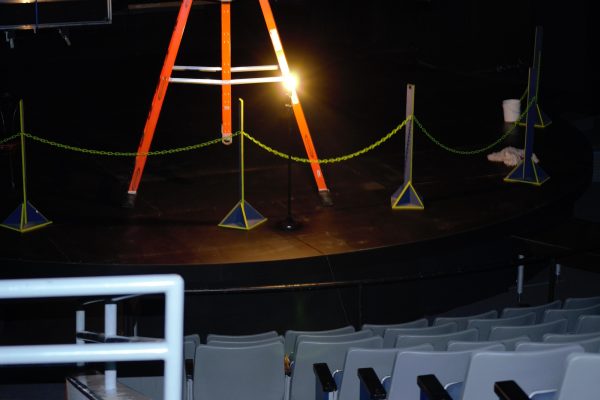True colors
Impact of diversity within the world of animation
January 14, 2022

For many years, people of color were not always adequately represented in animated features, but those days may be ending.
Recent film releases have not only worked towards resolving the lack of racial representation in movies, but they have also been able to create relatable, inspiring role models for racial minorities.
In 2017, the release of Pixar film “Coco” supported individuals fighting for racial representation within the film industry. Many children and even adults of Hispanic descent finally had a film that mirrored their traditions.
Third-year interior design major Noelia Bravo-Alejandrez mentioned how she felt represented by the more recent film released, including how she personally connected to the plot.
“Coco represents one of the holidays, Dia de los Muertos, day of the dead, which is very important to us,” Bravo-Alejandrez said. “Just the fact the movie had the brown characters was pretty nice. The hard work we do can be seen in the movies as well.”
Since the release of this groundbreaking película, many movies have emerged and created more diverse projects within the film industry. “Encanto,” Disney’s latest animated release, is one of these movies paving the way.
“Encanto” had a similar impact as “Coco” among its audiences. The story centers around the Madrigal family, blessed with a miracle that gives the whole family magical powers—all but one.
Mirabel Madrigal is the only one born into the family that does not have any powers. The plot focuses on Mirabel as she struggles to fit in and then becomes crucial to the survival of the Casita, which is what the family affectionately calls their home.
The presence of a Colombian family in a film greatly aids the fight for racial representation in animated films, but the abundance of white movie characters may continue to cause displacement in the eyes of people of color. This may disregard the diversity that is seen in society within everyday lives.
As the film industry grows and includes several racial backgrounds, recent films such as Sony Pictures’s “Wish Dragon” and Disney’s “Raya and The Last Dragon” have characters that reflect the Asian culture of the stories they tell.
Third-year communications major Sydney Laranang mentioned how the inclusivity in “Encanto” was not the only refreshing element of the film.
“I was kind of surprised, because usually with the Disney movies, someone is going on a big adventure,” Laranang said. “But in ‘Encanto,’ it was nice to see that there was no big journey away from home. That fixing the home instead made me think, ‘Wow, that’s some progress and different from other movies.’”
In addition to the unique plot, the family structure of “Encanto” differentiated from those that have been portrayed by previous animated features.
“I personally don’t relate to the big family dynamic they had, but in ‘Encanto,’ they had aunties, uncles, cousins and grandparents living in one house,” Laranang said. “I don’t know how close to real life that is, but it was pretty nice to show an extended family rather than a small one.”
While many saw “Encanto” as a continuation of showcasing culture and diversity, others saw the movie as not living up to the expectations previously set by “Coco.”
Fourth-year English major Laura Bower felt the presentation of the film did a disservice to the potential it had as a representation of Columbian family dynamics when compared to “Coco.”
“‘Coco’ was a great movie and gave lots of representation to the Hispanic community,” Bower said. “As well as representation, Coco also had better production and performance.”
Bower continued to explain why “Encanto” did not match the excitement she felt about the release of “Coco.”
“The plot of the movie was underwhelming, as there was no major climax, and the peak of the film was short as well,” Bower said. “There was a lot of potential from what the movie was trying to show, but it seemed forced rather than the film having a natural flow. I felt like the music was there to make the audience happy and not because it fit.”
With many new films including people of color set to be released in the coming years, some may question if these films will be able to rise to audience’s high expectations.
Third-year mechanical engineering major Annie Rogers spoke about her future expectations for diversity within animated movies.
“It’s nice to see the inclusion of different cultures in animations,” Rodgers said. “There were moments in the movie that were emotionally engaging and helped the audience relate to the struggles of the protagonist.”
With an era of inclusivity, there is much to look forward to. From the release of minority race films to the proud feeling of being represented, it can be said that viewers should expect more moviess like the previously mentioned animated releases.
“I think we’re pretty much there at a point where many movies will come out to include more people of color,” Bravo-Alejandrez said. “The different types of people would be something to look forward to because we don’t all look alike, and [we] have our own differences.”
























































































